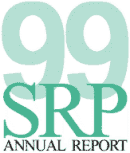|
III. Progress at Contaminated Sites (cont.)
Remedial activities conducted under state authority (cont.)
Emergency Response and Environmental CommunicationsThe Site Remediation Program responded to 839 emergencies during SFY99 and 418 in the first six months of SFY00. The Department "Hot Line" for reporting environmental concerns or discharge notifications answered 73,932 calls in SFY99 and 41,092 in the first six months of SFY00.
Memorandums of Agreement and Administrative Consent OrdersWhen the Site Remediation Program knows the individual or parties responsible for contamination at a site, a cleanup agreement is discussed. Once an agreement has been reached, an oversight document is issued and signed by both parties. Document types vary depending on the circumstances. An Administrative Consent Order (ACO) is the standard control document issued for priority sites. A priority site is one where the Department will use public funds to conduct remedial activities unless a private party agrees to perform the cleanup. If public funds are used, known responsible parties unwilling to do the cleanup themselves will be directed to reimburse the state and may be required to pay three times the cost of the cleanup. A Remediation Agreement is a contract between an ISRA responsible party and the Department. A Remediation Agreement allows the ISRA triggering event, such as a sale, transfer and/or closing of an industrial establishment, to proceed prior to the actual cleanup. A Memorandum of Agreement (MOA) is executed when a responsible party, a land developer, or other cooperative party agrees to investigate and/or clean up a non-priority site or any portion thereof in accordance with the Voluntary Cleanup Program. There were eight ACOs signed by responsible parties in SFY99 at priority sites with a total of $4.3 million in estimated remedial costs; seven ACOs were signed in the first six months of SFY00 with an estimated cost of $2 million. Also, 97 Remediation Agreements were executed by private parties during SFY99 with a total of $29.8 million in estimated remedial costs. In the first six months of SFY00, 65 Remediation Agreements were signed with $67.7 million in estimated remedial costs. The number of MOAs signed by private parties and local governments during SFY99 was 2,341 and in the first six months of SFY00 and additional 1,151 were signed. The large number of MOAs approved for each of the past several years reflects the popularity of the Voluntary Cleanup Program. It is important to note that there is not a one-to-one relationship between documents and sites or cleanups. One ACO could cover one or many sites and, conversely, an MOA could cover one site or a part of an overall site, such as only cleaning up an area where a spill occurred at the location. Also, homeowners cleaning up leaking underground storage tank sites containing fuel oil are covered under MOAs each year.
Environmental ClaimsThe Environmental Claims Administration (ECA) processes claims under the New Jersey Spill Compensation Fund (Spill Fund). The Spill Fund provides compensation to individuals and businesses that have suffered direct or indirect damage resulting from a discharge of hazardous materials such as petroleum products. In SFY99, ECA paid an estimated $3.6 million for 222 claims as compensation for damages caused by discharges of hazardous substances. Also, there were 10 administrative closures and nine claims denied during SFY99. In the first six months of SFY00, $736,000 for 261 claims was paid to compensate parties incurring damages. Three closures and four denials also were issued in the first six months of SFY00.
|
||||||||||||||||||||||||||||||||||||||||||||||||||
| To report an environmental
incident impacting NJ, call the Toll-Free 24-Hour Hotline |
||
Contact DEP | Privacy Notice | Legal Statement & Disclaimers | Accessibility Statement |
||
Site Remediation Program: SRP
Home | About SRP |
Search | Help Copyright © State of New Jersey, 1996- |
